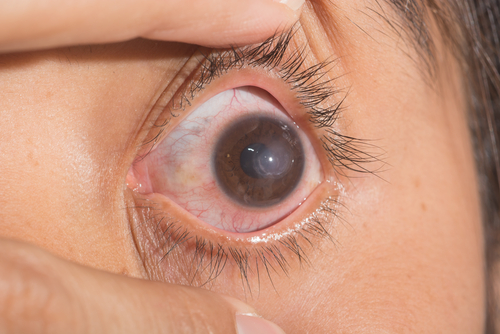What is a Corneal Ulcer?
Your cornea is a thin transparent sheet of tissue that covers the outside of your eye. It focuses light entering your eye onto your retina.
It also protects your iris, pupil, and lens, which all sit beneath it. Your cornea is a vital component of your eye. It covers the sensitive tissue beneath it, and it helps you see clearly by focusing light.
But, your cornea can sustain damage, especially from scrapes and infections. These can lead to something called a corneal ulcer or keratitis.
Without proper treatment, corneal ulcers can severely damage your eyes and lead to vision loss. Keep reading to learn more about corneal ulcers and what you can do to prevent and treat them.
What is a Corneal Ulcer?
A corneal ulcer is an open sore that forms on your cornea, usually due to an eye infection. Severe dry eye, medications, or eye injury can lead to a corneal ulcer as well, but infections are the most common cause.
Certain risk factors commonly lead to infections and corneal ulcers, including:
- Having had cold sores, shingles, or chickenpox
- Injury or burn on your cornea
- Dry eye syndrome
- Eyelid disorders like entropion or ectropion
- Wearing contact lenses
- Regular use of steroid eye drops
Eye pain, redness, and swelling are some of the most common symptoms associated with corneal ulcers. Other common signs of infections can also result, like pus, swelling, and discharge.
Visual symptoms can also occur. A corneal ulcer could impact your eyesight, especially if you don’t treat it quickly.
If you think you have a corneal ulcer see an ophthalmologist as soon as possible. They can severely damage your eye and even cause complete vision loss if left untreated.
How Do You Treat a Corneal Ulcer?
To diagnose a corneal ulcer, your ophthalmologist uses a dye called fluorescein to illuminate any damage to your cornea. Then they perform a microscope test called a slit lamp test to examine the damage.
If they think an infection caused your corneal ulcer, they will take a tissue sample for testing. Knowing the type of infection that caused the corneal ulcer makes treatment more effective.
Most corneal ulcer treatments are topical eye treatments. Various antibiotic, antiviral, and antifungal eye drops are the most common.
Other options are antifungal tablets or medication that gets injected near your eye. In the most severe cases, a corneal transplant may be necessary using a donor cornea. Although corneal transplant is a last resort, it could be required to save your vision.
Can You Prevent a Corneal Ulcer?
Many factors could lead to a corneal ulcer, making prevention difficult. The best thing you can do to prevent corneal ulcers is to keep your eyes healthy.
Avoid direct blows to them whenever possible and if you get anything in your eyes, wash them out with water. Avoid rubbing your eyes as it can cause damage to your cornea, which could result in injury or infection.
If you suspect you have a corneal ulcer seek treatment immediately. You risk vision loss if you leave one untreated.
Concerned you have a corneal ulcer? Schedule an appointment at Mid Ohio Eye Physicians and Surgeons in Columbus, OH, to ensure your eyes are safe!










